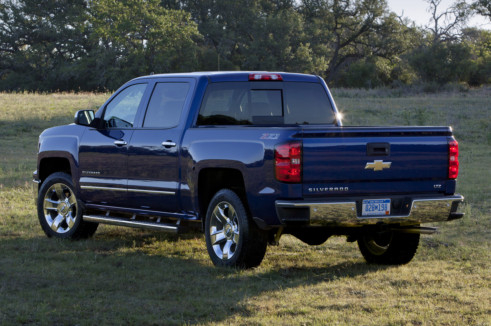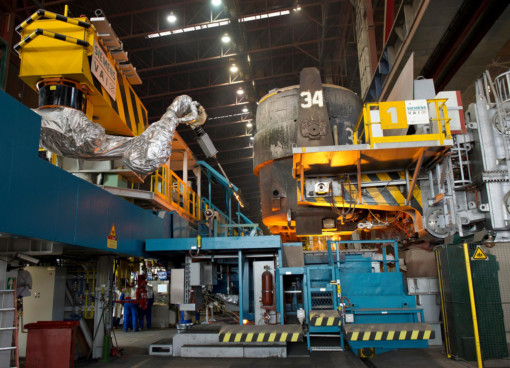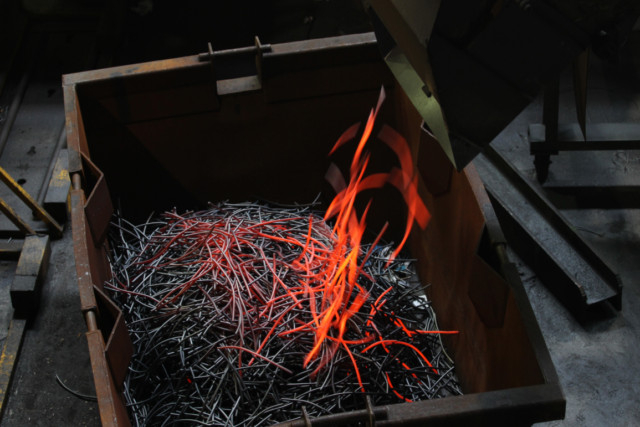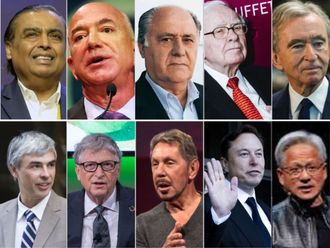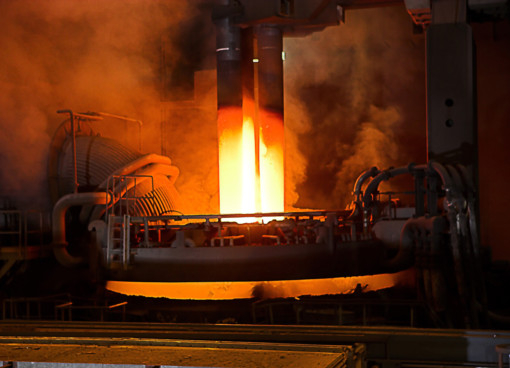
The steel industry is often regarded as a mature one, under the mistaken assumption that it uses time-tested processes with only incremental technological progress. However, the past four decades have witnessed several dramatic developments — the near disappearance of basic open-hearth processing in favour of oxygen steel-making, and widespread adoption of continuous casting in lieu of ingot casting are just two examples — which have changed the industry’s efficiency, productivity and product properties.
Around the world, new processes for steel production are in various stages of research and development, in parallel with continued improvements in the reliability, efficiency and energy usage of conventional processes. Some of these are likely to be implemented on a production scale sometime in the immediate future, while others are being slowly imbibed.
Concurrently, widespread response to specific technology drivers will result in industrial improvements and major developments in several key areas of everyday life.
EAFs replacing blast furnaces
What set this off?
Earlier this year, Mario Longhi, CEO of the United States Steel Corporation (U.S. Steel), made an announcement that his company would apply for permits to replace a blast furnace at its plant in Alabama with an electric-arc furnace (EAF) that will be in operation by 2017. The blast furnace is more than 100 years old and was initially scheduled for relining at a cost of $100 million (around Dh367 million) or complete closure.
What does this mean?
The blast furnace is the only way U.S. Steel has hitherto made metal. While the humongous blast furnace is expensive to turn off and on and to maintain and depends on iron ore and coal prices, steel in an EAF is made by melting shredded scrap metal in a process that can be started and stopped at will without excessive costs. “The business case for this project, today, is strong enough, which is why we’re filing for the permits now and we have started basic engineering for the new facility,” Longhi said.
Why are EAFs in the US attracting global attention?
EAFs form the backbone of steel-making operations at Nucor Corporation, U.S. Steel’s profitable rival. In the past decade, nimble EAF steelmakers such as Nucor and Steel Dynamics, Inc. have easily outperformed integrated producers such as U.S. Steel and ArcelorMittal.
Will this become a global trend?
Making a move towards EAF is a corporate shift in philosophy, a recognition that times have changed. The use of EAFs allows steel to be made from 100 per cent scrap metal feedstock, which reduces the energy required to make steel, when compared to primary steel-making from ores. These furnaces, in spite of being more electricity-intensive, require a much lower investment per unit and are significantly more efficient in terms of labour.
FutureSteelVehicle (FSV)
What is it in a nutshell?
FutureSteelVehicle (FSV) is a 2011 steel vehicle engineering study organised by WorldAutoSteel, the automotive group of the World Steel Association, with 17 participating global steel companies, that explores and designs lightweight steel electric-powered vehicles. The FSV features steel body structural designs for cars that reduce mass by more than 35 per cent over a benchmark vehicle, and reduce total life cycle emissions by nearly 70 per cent.
Why is it attracting attention now?
A 1998 study called UltraLight Steel Auto Body (ULSAB) and its 2001 follow-up ULSAB-AVC (advanced vehicle concepts) looked at new ways to take weight out of automotive body structures with high-strength steel and examined vehicle concepts in lightweight steel design. Although no car company built an ULSAB-AVC model, many of the findings were adopted by car companies around the world. The FSV study is expected to gain similar traction.
So what is the brouhaha about?
Although car companies have not clamoured to build FSV cars by using the published engineering designs, lightweight steel concepts from the study are already showing up in vehicles, writes Ronald P. Krupitzer, Vice-President of Automotive Market, Steel Market Development Institute, a business unit of American Iron and Steel Institute (AISI), in the current issue of Design News, an online and print resource for design engineers and engineering managers.
Are there any examples in use?
Great Designs in Steel (GDIS) seminar, an event that brings together the automotive and steel industries in one place, held in Detroit last year, had some of the first FSV technologies in action. The first examples of FSV features come from the 2014 Chevrolet Silverado pickup truck with its steel-intensive cab design featuring 72 per cent high-strength steel. The 2013 Ford Escape also makes effective use of Advanced High Strength Steels grades.
“That’s about as fast as is possible to incorporate new design technologies into the automotive product development cycle,” writes Krupitzer. “Many other new vehicles will likely incorporate these and other technologies that demonstrate the concepts reported in the FSV study. However, the full implementation of all the FSV concepts, with a suggested usage of various kinds of high-strength steel of up to 97 per cent, will take some time.”
Robots
Robots for EAFs
Who invented a robot, and why?
Siemens VAI, a global pioneer in innovating processes, technologies and automation at steel plants, launched a robot that is suitable for the harsh operational conditions of casters, secondary metallurgical plants, converters, and also EAFs. It is called SIMETAL LiquiRob.
So, what is significant?
The extremely fast Siemens VAI robot performs fully automatic temperature and sample measurement cycles including cartridge replacement, making manual and even manipulator measurements completely obsolete. At EAFs, it provides flexibility and reliability needed to ensure uninterrupted, fail-safe and controlled steel production. SIMETAL LiquiRob also replaces mechanical manipulators, resulting in higher availability, easier upgrading and quicker learning of new operations. In many cases, it will also replace operators in making temperature measurements or taking samples, eliminating the need for human presence in hazardous areas.
Is anyone already using the technology?
Two years ago, the Riva Group became the world’s first steel producer to use Siemens LiquiRob technology at its EAF in Neuves-Maisons, where it handles sampling and temperature and Celox measurements.
LiquiRob systems are also installed at the Linz steelworks of voestalpine Stahl GmbH, where approximately 5.5 million tonnes of steel is produced, cast and processed each year into products.
Robotic CNC plasma cutting system
Is this another robot?
PythonX is a robotic CNC plasma-cutting system that is revolutionising structural steel fabrication. More than a machine, PythonX has created a new standard for running a fabrication shop. By combining advanced CNC robotics with high-definition plasma cutting, the software is so sophisticated it cuts by itself. For many fabrication shops, it is becoming the only machine they need to use.
How does this make a difference?
Traditional fabrication involves laying out cuts and moving the beam from the drill line to the band saw to the coping station. It takes up too much time, space, and is prone to errors.
PythonX replaces as many as half a dozen machines such as beam drill line, band saw, angle line, plate or bar lines, and coping and marking machines. It calculates the cutting path and sequence, moves the beam into position, and starts making all the needed cuts and features.
Anything else that is significant?
Compared to traditional machines, PythonX uses only 20 per cent of floor space and processing time — for 20 per cent of the price.
The CO2 Breakthrough Programme
What is this?
The American steel industry is conducting research on the next generation of iron- and steel-making technologies that will reduce or eliminate CO2 emissions. Collectively, it is called the CO2 Breakthrough Programme. The American Iron and Steel Institute (AISI) recognises that these projects could fundamentally change the way steel is produced and used.
Will the results be visible immediately?
Adopting new technology is usually a process that takes decades, but it is hoped that the CO2 programme will be developed within 15-20 years.
Any breakthrough?
According to Steel.org, an example of a breakthrough technology project is the current programme run by the Massachusetts Institute of Technology to produce iron by molten oxide electrolysis. This technique generates near-zero CO2 emissions. Another project, Ironmaking by Hydrogen Flash Smelting, at the University of Utah, replaces carbon as a blast furnace fuel with hydrogen. AISI members are also developing the Paired Straight Hearth Furnace that can process steel plant waste, as well as virgin iron materials. Using coal instead of coke, this type of equipment will be available for commercial demonstration within five years and will achieve around 30 per cent reduction in energy use against older technologies.


